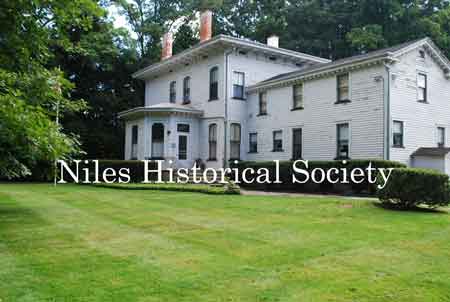|
Individual Membership: $20.00
Family Membership: $30.00
Patron Membership: $50.00
Business Membership: $100.00
Lifetime Membership: $500.00
Corporate Membership:
Call 330.544.2143
Do you love the history of Niles, Ohio
and want to preserve that history and memories of events for future generations?
Click
here to donate:
As a 501(c)3 non-profit organization,
your donation is tax deductible. When you click on the Donate Button,
you will be taken to a secure Website where your donation will entered
and a receipt generated.
|
| 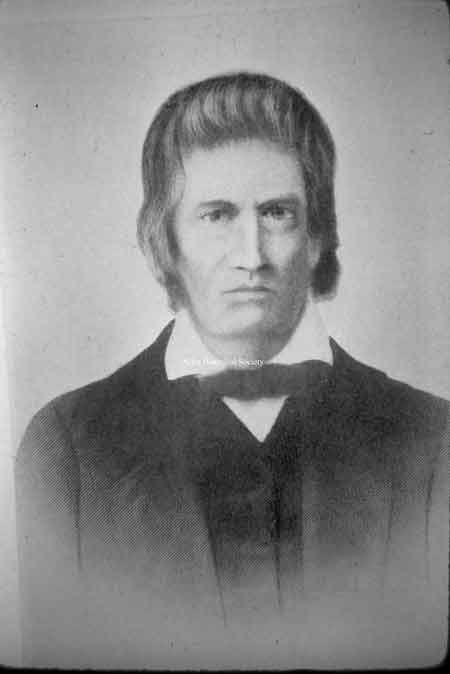
James Heaton, 1771-1856
Founder of Niles.
Son of Isaac Heaton and Hannah Bowen.
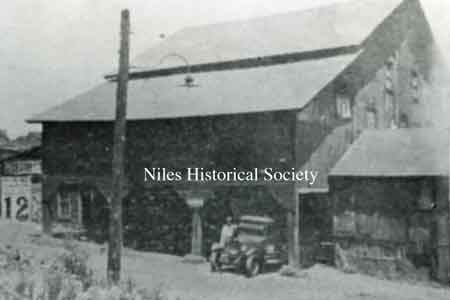
1806 Grist Mill
|
Famous
Families in Early Niles:
Ward, Heaton and Mason.
In about 1806, James Heaton
selected as his permanent settlement the vicinity near the junction
of Mosquito Creek and the Mahoning River. He purchased the land
along the creek for at least a mile and a half north of the river.
He built his home, a saw mill and a grist mill. This was the first
industry in what is now called Niles.
The saw mill was abandoned, but the
old grist mill, with its sturdy timbers was still in use in 1934
by Drake and McConnell. It was built of oak planks two
feet wide and two and one half inch thick, and axe-hewn beams and
pillars more than one foot square. The parts were fitted and held
together with wooden nails, the old grist mill stood as a monument
to the hard labor and capable workmanship of pioneer builders.
After building his grist mill, James
Heaton constructed in 1809 a blooming forge here, which manufactured
the first bar iron in Ohio. The pig iron for this product, Heaton
had obtained from the Yellow Creek furnace in Poland; but when war
was declared in 1812 the furnace men enlisted or were drafted and
the furnace closed. James Heaton immediately made plans to supply
his own pig iron requirements and in so doing developed an industry
that for many years was to attract settlers to the new community
in Weathersfield Township.
The Heaton forge is believed to have
stood on the bank of the Mosquito Creek near the Baltimore and Ohio
railroad bridge across the creek. In 1812 James Heaton borrowed
$1,448 from his brother, John, and in 1813 completed the construction
of a charcoal blast furnace capable of producing the pig iron need
for the manufacture of bar iron and other products at the Heaton
forge. He named his blast furnace “Maria Furnace” in
honor of his daughter, Maria, believed to be the first white child
born in Niles.
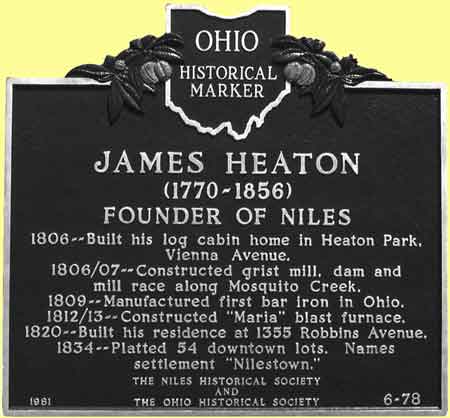
|
|
| 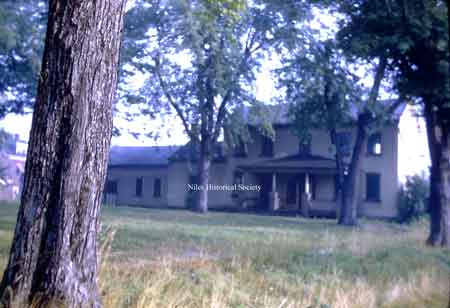
The house was demolished in the early
1970s after several attempts to preserve it for historical reasons
failed. SO1.439
|
In 1818 James Heaton built this
house on the southwest corner of what is now Robbins Avenue and
Cleveland Avenue.
In 1834 he sold it to Ambrose
Mason and it became known as the Heaton-Mason Homestead,
being occupied by five successive generations of the Mason family.
It was an imposing white brick structure with wooden pegs that
held the timbers in place. Its cherry circular staircase and numerous
spacious rooms with fireplaces were features of the landmark.
|
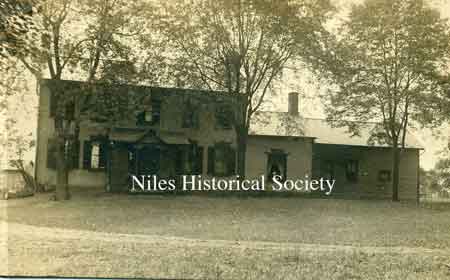
Heaton-Mason Homestead
|
|
| 
James Heaton Family Tree
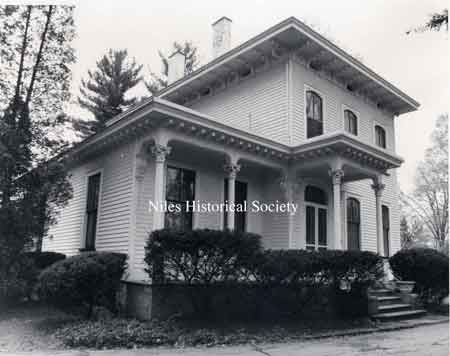
Main Entrance to Ward Mansion
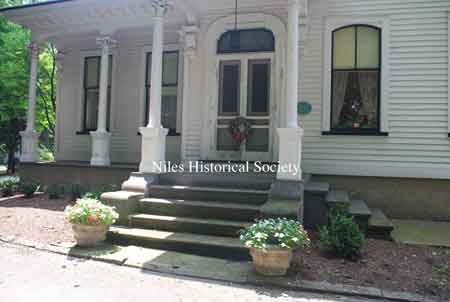
|
William and Sarah Ward
had eight children. They came to America in 1817 and went directly
to Pittsburgh, Pa. William Ward was a practical iron worker and
his sons obtained knowledge of the business from their association
with him.
Their son, James Ward married Eliza
Dithridge in 1835. Her family was also involved with the
iron manufacturing in Pittsburgh. In 1841 James Ward and his brother,
William built the first rolling mill in Niles. The firm was destined
to play a prominent part in the history of Niles, as well as the
entire Mahoning valley.
Just as the Heaton family founded
the village of Niles, and the industries that nourished it, so
the Ward family provided the industrial leadership that transformed
Niles from a diminutive village of 300 inhabitants and a single
furnace in 1840, to a thriving industrial town with a population
of around 3,000 by 1870.
The first Ward plant stood on the
north bank of the Mahoning River, east of the viaduct. In 1859
James Ward built the Elizabeth Furnace to supply the pig iron
for his rolling mill. It was located on the east side of the Mosquito
Creek, about where East Park Avenue crosses the creek.
In 1862 James and Elizabeth
Ward built the house at 503 Brown Street. A lot of thought
obviously went into the building of the house. The front entrance
holds double doors with glass windows which open to allow the
air to flow into the house and up the stairs which are in the
main hallway. This allows for the cooling of the house in the
summer.
Of course this was before window
screens as we know, so grates for the windows were installed to
prevent birds from flying inside. These were probably made at
the Ward factory and have the same motif as the frosted glass
window above the double doors. We were told that the windows also
held a frosted glass insert with the same motif, but they were
removed some time ago. The frosted glass panels were made by Eliza’s
brother, Edward Dithridge, who was a glass cutter and
engraver in Pittsburgh.
|
|
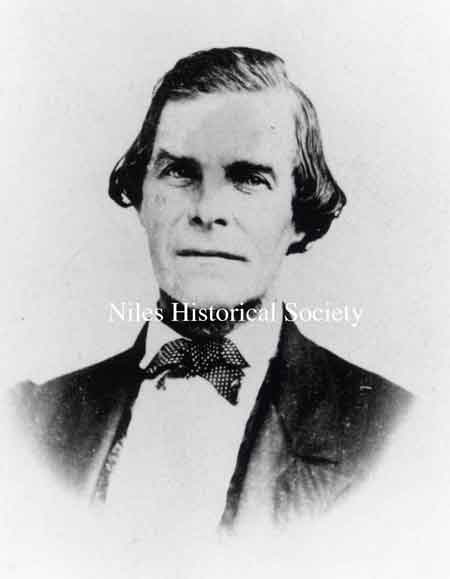
James Ward |
James Ward, pioneer ironmaster
of the Mahoning Valley, was born November 25, 1813 in Staffordshire,
England. He came to America in 1817 and to Niles from Pittsburgh
in 1841.
He built puddling plants, founded
James Ward & CO, The Falcon Nail and Iron Company and the
Russia Mill for manufacturing steel. He was shot to death on July
24, 1864.
A photo of William Ward, Sr.
who was the brother of James Ward Sr., builder of the Ward-Thomas
House and co-founder of the Ward Iron Mills. He was born in 1806
and died in 1888.
|
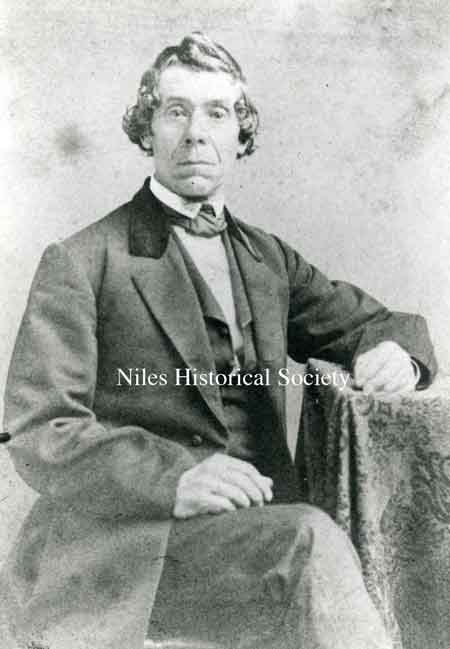
William Ward, Sr. |
|
| 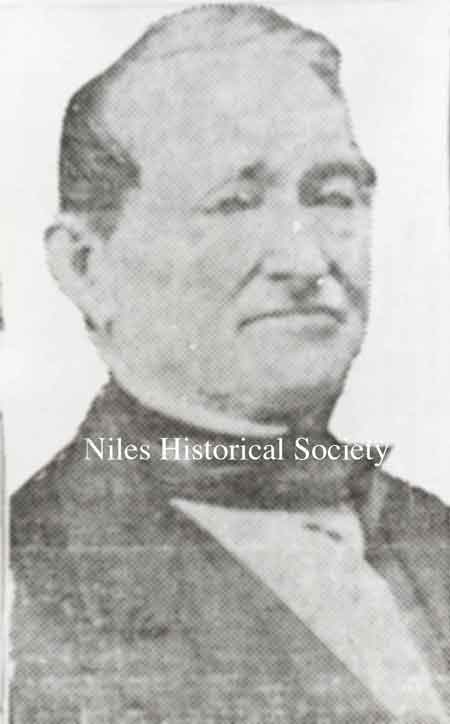
Josiah Robbins |
In
1826 a handsome and energetic young bachelor, Josiah Robbins,
arrived in Niles from Youngstown and proceeded to establish himself
in the business and social life of the community.
Soon he married Maria Heaton,
and in 1830, with his brother-in-law, Warren Heaton, took
over management of the Maria Furnace, on James Heaton's retirement.
When Warren Heaton died in 1842, the
furnace was leased to William McKinley, Sr., Reep and Dempsey
In 1836, Maria Heaton died and Josiah
subsequently married Electa Mason, daughter of Ambrose
Mason and joined with his father-in-law in the prosperous mercantile
business. |
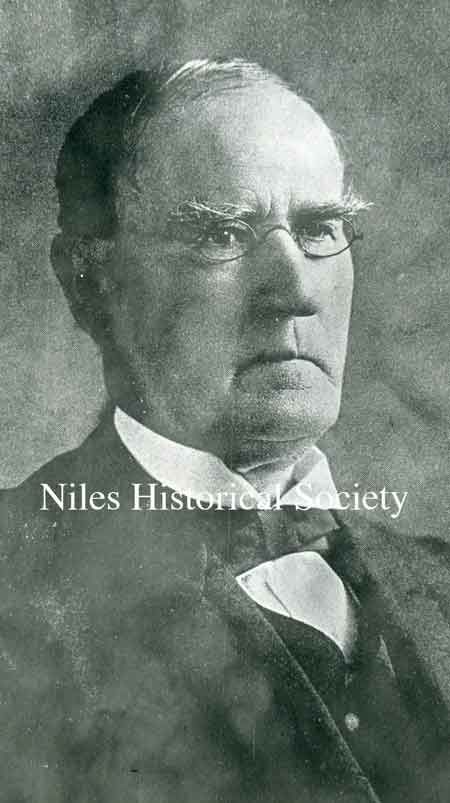
William McKinley, Sr. |
|
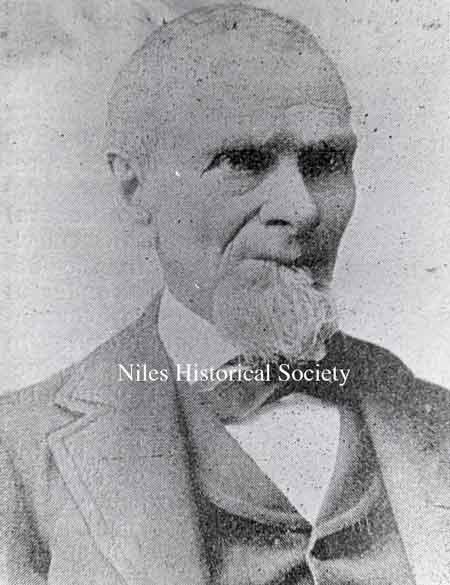
H.H. Mason PO1.1105
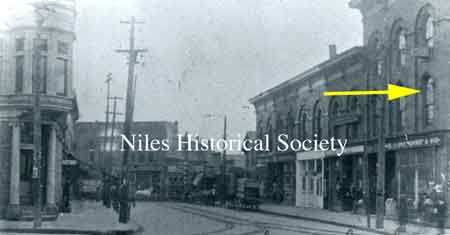
Mason Block on State Street |
By 1834 the settlement had reached
the proper proportions of a village so James Heaton planned the
streets, marked off the lot division and named the village. Until
1834 the settlement was appropriately called “Heaton’s
Furnace”, but James Heaton gave it a new name “Nilestown”
in honor of Hezekiah Niles, editor of the Niles Register,
a Baltimore paper, who’s Whig (early political party) principals
Heaton greatly admired.
Nilestown remained the name until
1843 when Ambrose Mason, Postmaster, for convenience
shortened it to “Niles” and that is how Niles got
its name.”
Ambrose Mason led the line of Masons
here in 1835. He started the first mercantile store with Josiah
Robbins, who had married Mason’s daughter after the death
of his first wife, Maria Heaton. Maria Heaton was the daughter
of James Heaton, founder of Niles, who built the first iron furnace
in 1809. Heaton prospered and built a stately home on the southwest
corner of Robbins and Cleveland Avenues.
Harry H. Mason, Ambrose's
distinguished son, was born in New York in 1819. In 1842, he also
opened a mercantile store, which served the Heatons, James
Ward, William McKinley Sr. and others. He was assistant postmaster
and succeeded his father as Postmaster.
Harry Mason was elected as the first
Mayor of the Village of Niles after it was incorporated in 1866.
The mayor's salary was $100.00 per month at that time.
The city building then was a tiny
wooden structure on the land which would later become the McKinley
Memorial grounds.
He was one of the builders of the
Mason block at the southeast corner of Main and State streets
(built prior to 1882). He became president of the City National
Bank in 1893.
|
|
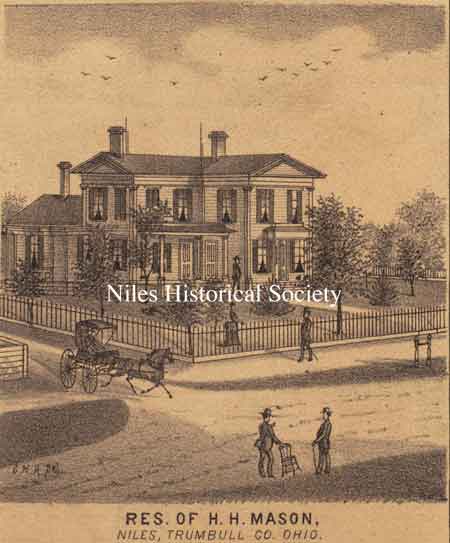
Drawing from the 1874 Everts Atlas. |
Residence
of H. H. Mason located on Vienna Avenue in Niles. Mason moved into
this homestead in 1859.
Mr. Mason was the first mayor elected
after Niles was incorporated as a village in 1866. It was in this
home that he held court. |
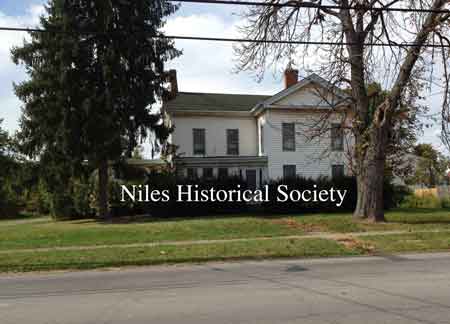
H.H. Mason residence (2019). |
|
|
